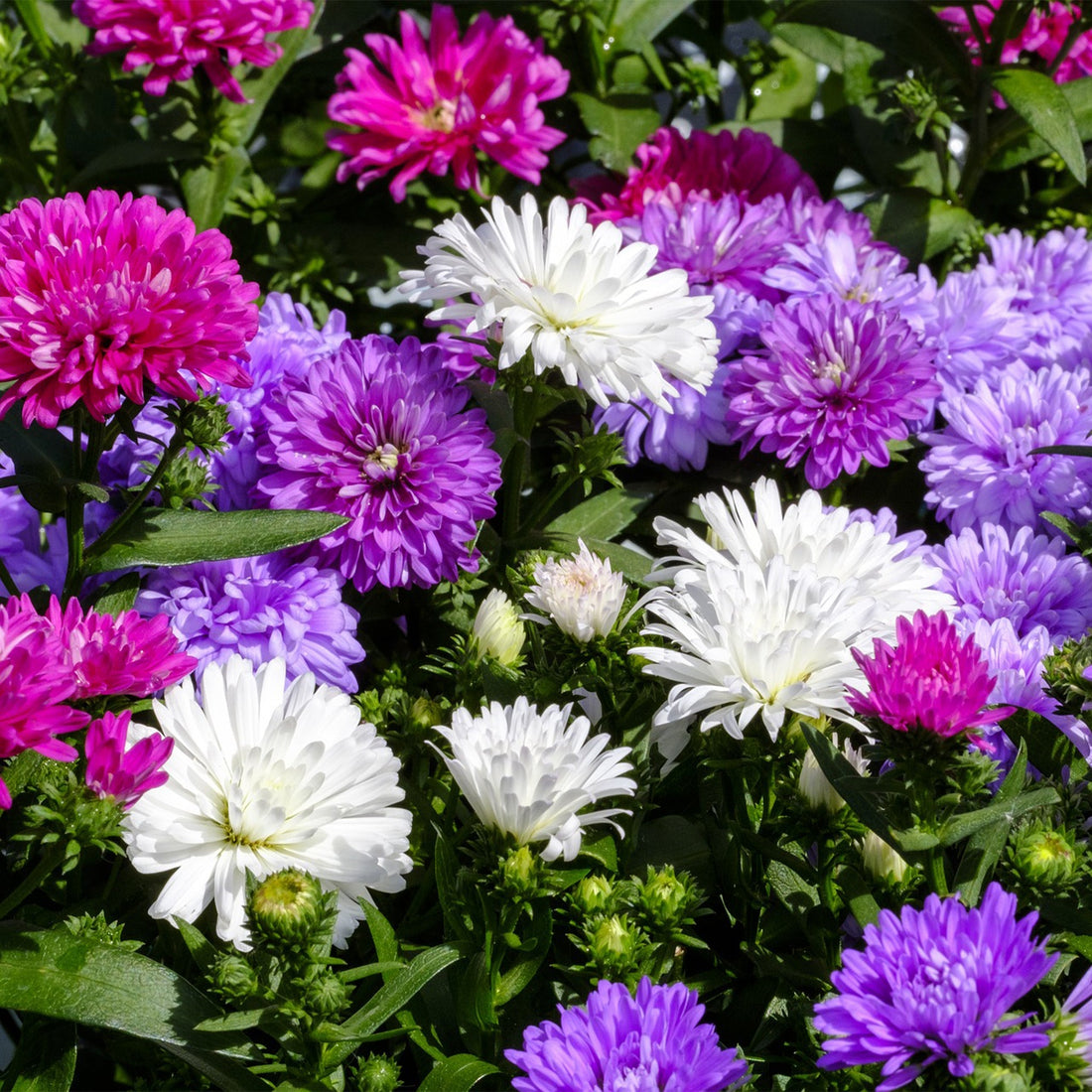
How To Grow Asters From Seed
Share
Asters flowers bloom from late summer through fall, and come in boundless varieties and shades. They make an excellent ground cover, and are great for flower garden borders.
Mix asters with other late blooming flowers for a charming late-season color display.
These upright flowering plants bear colorful flowers in a range of pink, blue, purple and white.
Growing 1 to 6 feet tall, depending on variety, asters thrive in full sun. Some varieties will tolerate part shade, but will have less blooms. Planting asters in a different area every year will help prevent plant disease.
Asters do well in a moist, but well-drained loamy soil. Wet clay soil will lead to root rot and dry sandy soil will lead to plant wilt.
An ideal place for the asters is where summers are humid and there is a cool environment at night.
Place them in a location with a minimum of 6 hours of full sun and ensure they receive water regularly until they are established. Afterwards the plants are fairly tolerant to drought and need little maintenance.
However, asters don't do well in hot areas, especially at noontime when the temperatures are high.
Deadheading spent blooms throughout the growing season can promote additional flowering.
Aster will attract butterflies and hummingbirds to your garden, providing habitat and late-season food for pollinators.
Start the Aster seeds indoors 6 - 8 weeks before the last expected frost.
Press the flower seeds gently into the soil and lightly cover.
Keep the soil moist and warm (60 - 70F) during germination. The average germination time is 7 - 21 days.
Harden off the seedlings and transplant out into the garden once frost danger has passed.
Transplant seedlings in the garden when they have two sets of true leaves, after all danger of frost has passed. Your asters will bloom about three to four months after sowing the seeds.
Aster seeds can also be started directly outdoors in prepared seedbeds in areas with long growing season.
Make sure the risk of frost has passed before directly sowing Aster seed, or transplanting Aster plants started indoors.
Thin the plants to the proper spacing depending on the type of Aster and pinch back young plants several times before mid-July to encourage bushier growth and encourage blooming through the entire season.
Once established, they require little watering, unless conditions have become unusually dry and the plants show signs of stress. Keep soil moist, but not saturated. Mulch around the base of the plant to help hold in moisture.
Tall asters need to be staked to prevent them from falling over.
Before winter cut the plants back.
Asters are wonderful for flower arrangements. The vase life is 5 to 10 days, depending on variety.

